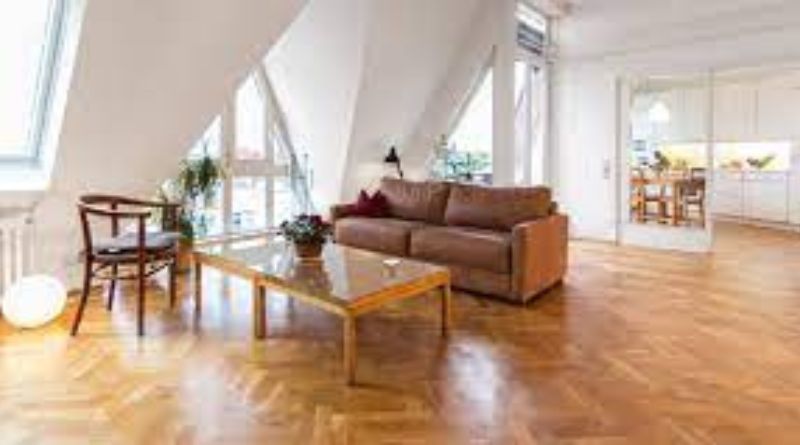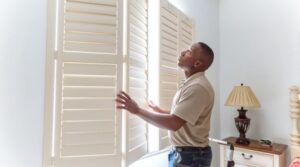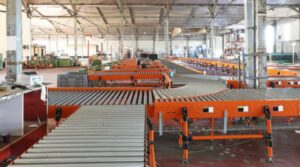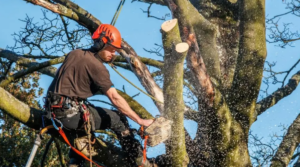
A Guide To The Different Types Of Timber Flooring Options
You’ve finally decided to take the plunge and upgrade your home’s flooring, but with so many options available, it can feel like you’re lost in a forest of choices. Fear not, this guide is here to help you navigate through the different types of timber flooring options and find the perfect fit for your home.
In this article, we’ll explore various timber flooring options such as solid hardwood flooring, engineered timber flooring, laminate flooring, bamboo flooring, and cork flooring. Each type has its own unique characteristics and benefits that cater to specific needs and preferences. We’ll also share some valuable maintenance tips to ensure your chosen timber floor stays looking fresh and fabulous for years to come. So put on your explorer hat and let’s embark on this journey through the wonderful world of wood!
Solid Hardwood Flooring
You’ll find that solid hardwood flooring offers timeless beauty and incredible durability, making it a long-lasting investment for your home. Available in numerous hardwood varieties such as oak, maple, cherry, and walnut, you can select the perfect species to match your personal aesthetic and style preferences. It’s important to consider wood sustainability when choosing your timber, as some species are more environmentally friendly than others. Look for options with certifications from organizations like the Forest Stewardship Council (FSC) or Programme for the Endorsement of Forest Certification (PEFC) to ensure responsible forest management practices have been followed.
Another advantage of solid hardwood flooring is its ability to be sanded and refinished multiple times throughout its life. This allows you to easily rejuvenate your floors or change their appearance by staining them a different color if desired. Due to their thickness, solid hardwood floors can last for several decades – sometimes even over a century – with proper care and maintenance. However, keep in mind that these floors are susceptible to moisture damage; hence installation in areas with high humidity or potential water exposure should be avoided.
One of the most significant factors affecting the cost of solid hardwood flooring is the wood species chosen. Some exotic varieties may come at a higher price due to limited availability or increased shipping costs but offer unique colors and grain patterns that set them apart from domestic options. Additionally, professional installation is highly recommended for this type of flooring due to its specific requirements regarding subfloor preparation and expansion gaps between planks. While purchasing solid hardwood flooring might require a larger upfront investment compared to other types of timber flooring options, it remains an excellent choice due to its unparalleled beauty and impressive lifespan when properly maintained.
Engineered Timber Flooring
If you’re looking for a durable and versatile choice, engineered timber flooring might just be the perfect solution for your home. Engineered wood benefits from a layered construction that combines the beauty of real hardwood with the stability and ease of installation found in laminate or vinyl flooring. Typically composed of a high-quality plywood core topped with a hardwood veneer, engineered timber can withstand fluctuations in humidity and temperature better than solid hardwood, making it an ideal option for various climates and locations within your home.
One of the standout features of engineered timber is its versatile applications. Due to its dimensional stability, it can be installed over most subfloors, including concrete slabs or radiant heating systems – something that would typically pose issues for solid hardwood flooring. The click-lock installation method used with many engineered products also allows for easy DIY projects if you’re looking to save on labor costs. Moreover, since only the top layer consists of actual hardwood species such as oak or maple, you’ll still get that authentic look and feel without sacrificing performance.
Engineered timber flooring offers an excellent balance between style, functionality, and affordability. With numerous options available in terms of species, finishes, plank widths, and thicknesses – not to mention the practical benefits like increased moisture resistance – there’s no doubt that this type of flooring will meet both your aesthetic preferences and functional requirements. Don’t hesitate to explore this fantastic alternative to traditional solid hardwood when planning your next home renovation project; you may just find yourself enjoying all that engineered wood has to offer while leaving any worries about warping or buckling behind!
Laminate Flooring
Looking for a budget-friendly flooring option that doesn’t compromise on style and durability? Laminate flooring may be just what you need, as it offers easy installation and maintenance, while boasting an impressive lifespan. With its high resistance to wear and tear, this versatile material is perfect for transforming your space without breaking the bank.
Budget-Friendly Option
For those penny pinchers out there, laminate flooring is a wallet-friendly choice that doesn’t skimp on style and durability. It’s an excellent option for homeowners looking to invest in cost-effective alternatives without compromising on quality or appearance. Laminate flooring has many budget-friendly benefits that make it stand out among other types of timber flooring options.
- Affordability: Laminate is one of the most affordable types of timber flooring available, often costing much less than hardwood or engineered wood floors. The lower price point allows homeowners with tight budgets to enjoy the look and feel of wood without breaking the bank.
- Easy Installation: Laminate floors are designed with a click-lock system, making them a breeze to install even for DIY enthusiasts. This means you can save money on installation costs by doing it yourself or hiring less experienced (and more affordable) workers.
- Low Maintenance: Laminate flooring requires minimal upkeep compared to traditional hardwood floors. You won’t need special cleaners or polishing products, which means more savings over time.
- Durability: High-quality laminate floors can withstand everyday wear and tear, scratches, and even moisture better than some other types of timber flooring options. With proper care and maintenance, your investment will last for years to come.
In conclusion, if you’re looking for stylish and durable timber flooring options at an affordable price point, laminate might just be the perfect solution for your home!
Installation and Maintenance
Imagine effortlessly installing and maintaining your beautiful new laminate floors, making your home feel warm, inviting, and polished without breaking a sweat or the bank. With a variety of installation methods available for different types of timber flooring options, you can find the perfect fit for your needs and skill level. Floating floor installations are popular due to their simplicity, as they don’t require glue or nails – just click the boards together over an underlay and you’re set. Alternatively, if you prefer traditional hardwood flooring, there’s always the option of nailing or gluing down planks for added stability.
When it comes to maintenance techniques for timber flooring, it’s essential to know how to keep them looking their best while also preserving their durability. For daily upkeep on laminate floors, sweep or vacuum regularly using a soft-bristle brush attachment to remove dirt and debris that can scratch the surface. You should also avoid using excessive water when mopping since moisture can cause damage over time; instead opt for damp mopping with a microfiber mop head. For more in-depth cleaning of hardwood floors, consider using specialized wood cleaners that won’t harm the finish or leave residue behind. And remember: preventative measures like placing protective pads under furniture legs and rugs in high-traffic areas go a long way in extending the life of your stunning timber floors!
Durability and Lifespan
When it comes to durability and lifespan, you’ll find that today’s laminate and hardwood floors are designed with longevity in mind, ensuring your home remains stylish and functional for years to come. Timber selection plays a crucial role in determining the performance of your flooring over time, as different species have varying levels of hardness, resistance to wear, and ability to withstand environmental factors. It’s important to choose a timber species that suits not only your aesthetic preferences but also the specific requirements of your space – whether it be high-traffic areas or rooms prone to moisture exposure.
There are several key factors you should consider when evaluating the durability and lifespan of various timber flooring options:
- Janka Hardness Rating: This industry-standard measurement indicates the resistance of wood species to denting and wear. A higher Janka rating means better durability, so make sure you select a timber with an appropriate rating for your needs.
- Environmental Impact: Opting for sustainably-sourced timbers can help minimize the ecological footprint of your flooring choice while still providing long-lasting strength and stability. Look for certifications like FSC (Forest Stewardship Council) or PEFC (Programme for the Endorsement of Forest Certification) when selecting timber products.
- Finish Quality: The finish applied to your timber flooring affects its overall durability, as well as its resilience against staining, scratching, and fading due to UV exposure. High-quality finishes such as polyurethane or aluminum oxide coatings can significantly extend the life of your floor while maintaining its pristine appearance.
By carefully considering these factors during the selection process, you can ensure that your investment in quality timber flooring will provide lasting beauty and functionality within your home environment – all while minimizing any negative impacts on our planet’s natural resources.
Bamboo Flooring
You’ll love the sleek, modern look of bamboo flooring as it adds a touch of sophistication and eco-friendliness to your living space. Bamboo sustainability is one of its key selling points, as bamboo is a rapidly renewable resource that can be harvested in just 5-7 years, compared to other hardwoods which take decades to mature. Additionally, bamboo’s unique aesthetics offer an appealing alternative to traditional timber floors with its distinct grain patterns and natural color variations.
When choosing bamboo flooring, it’s essential to be aware of the differences between solid and engineered options. Solid bamboo floors are made from strands of raw bamboo fibers that have been compressed together under high pressure, resulting in a dense and durable product. On the other hand, engineered bamboo consists of a layer of real bamboo bonded onto layers of plywood or fiberboard for added stability and resistance to moisture. While both types deliver excellent performance characteristics, they differ in installation methods; solid floors typically require nailing or gluing down while engineered planks can be installed using floating or click-lock systems.
Bamboo flooring also comes in various styles such as vertical-grain (where thin strips are laminated together vertically), horizontal-grain (with wider strips laid horizontally), strand-woven (fibers are intertwined and compressed into highly resilient planks), and even hand-scraped or distressed finishes for added texture. To ensure you’re getting a high-quality product that will stand the test of time, look for reputable brands offering longer warranties and opt for those using low-VOC adhesives during manufacturing. With proper care and maintenance – including regular sweeping, spot cleaning with damp cloth or mop, avoiding harsh chemicals like ammonia-based cleaners – your beautiful new bamboo floor will provide lasting durability without sacrificing style or environmental responsibility.
Cork Flooring
After exploring the eco-friendly and stylish option of bamboo flooring, you might be curious about other sustainable choices for your home. Another fantastic alternative is cork flooring. With its unique appearance, excellent insulation properties, and environmentally friendly sourcing, cork flooring has become an increasingly popular choice for homeowners looking to make a statement while staying green.
One of the most significant cork benefits is its sustainability factor. Cork is harvested from the bark of cork oak trees without causing any damage or requiring the tree to be cut down. This means that it’s a renewable resource with minimal impact on the environment. Additionally, since cork oaks can live up to 200 years and can be harvested every nine years, this sustainable sourcing ensures that there will always be a continuous supply of materials for future generations.
Cork flooring also offers a myriad of practical advantages – it’s naturally hypoallergenic, resistant to mold and mildew growth, as well as being an excellent insulator against both heat and noise. Its cushiony surface provides comfort underfoot while still remaining durable enough to withstand daily wear and tear in high-traffic areas of your home. So if you’re seeking an attractive yet eco-conscious timber flooring option that boasts numerous functional perks too, do consider adding cork flooring into your list of potential choices.
Timber Flooring Maintenance Tips
When it comes to maintaining your timber flooring, there are several aspects to consider for keeping them in top-notch condition. You’ll need to focus on proper cleaning and preventing damage, knowing when and how to repair and refinish the surface, as well as implementing long-term care and protection strategies. By following these guidelines, you can ensure that your investment stays beautiful and durable for years to come.
Cleaning and Preventing Damage
To keep your timber floors looking their best, it’s essential to clean and prevent damage regularly. Damage prevention starts with proper care from the moment you install your flooring, such as using felt pads under furniture legs to avoid scratches and dents. Routine cleaning techniques can also make a significant impact on the longevity of your timber floors. Sweeping or vacuuming daily is crucial to remove dirt, dust, and other particles that can cause surface scratches when walked upon. Additionally, you should damp-mop your floor weekly with a well-wrung microfiber mop and a pH-neutral wood floor cleaner to maintain its appearance without causing damage.
Apart from daily and weekly cleaning routines, there are other preventive measures you can take to prolong the life of your timber flooring. Place entry mats at all exterior doors to capture dirt before it reaches your floors; just be sure they’re made of natural fibers free from rubber backings or vinyl liners that could damage wood surfaces over time. Use area rugs in high-traffic spots like hallways or living rooms to minimize wear on the finish. Keep pet nails trimmed and avoid wearing high heels or cleats indoors to prevent denting or scratching. Lastly, maintain consistent humidity levels by using humidifiers during dry seasons and dehumidifiers in damp conditions – this will help prevent warping or buckling due to fluctuations in moisture content within the wood itself. By following these cleaning techniques and damage prevention tips, you’ll ensure that your timber floors remain beautiful for years to come.
Repair and Refinishing
You might be surprised how easily your timber floors can be repaired and refinished, making them look brand new again. Flooring restoration is a cost-effective solution that can bring life back to your worn-out or damaged wooden floors. Before you start the process, it’s essential to assess the type of damage and identify the best repair method for your specific flooring situation. Scratch solutions are available in various forms, from DIY options to professional refinishing services.
To help you decide on the best approach for repairing and refinishing your timber floors, consider these factors:
- Extent of damage: Minor scratches and dents can often be fixed with DIY scratch solutions or filling products, while more severe damage may require sanding or even replacing individual boards.
- Type of finish: Different finishes like oil-based polyurethane or water-based acrylic may have different requirements for repair and refinishing.
- Wood species: Some hardwoods like oak respond well to refinishing, while others such as bamboo might not be as forgiving.
- Budget constraints: Evaluate whether it would be more cost-effective to invest in a full floor replacement or opt for targeted repairs and refinishing.
Long-term Care and Protection
Maintaining your wooden floors’ beauty and longevity involves long-term care and protection, which can save you time and money in the future. A significant aspect of this care is moisture protection, as excessive humidity or dampness can cause warping, buckling, or even rotting of your timber flooring. To prevent these issues, ensure that any spills are promptly cleaned up and avoid using excessive water when mopping your floors. It’s also essential to maintain a consistent indoor humidity level between 40-60%, which may involve using a dehumidifier or humidifier depending on the climate.
Proper ventilation plays a vital role in maintaining the integrity of your timber flooring as well. Good airflow helps regulate indoor humidity levels while preventing condensation from forming on your wood surfaces. This means regularly opening windows and doors to let fresh air circulate throughout your home, particularly during periods of high humidity or temperature fluctuations. Additionally, make sure all vents and ducts are clean and functioning efficiently to promote proper air circulation within the space. By taking these steps to protect your wooden floors from moisture damage and ensuring adequate ventilation, you’ll be able to enjoy their natural beauty for many years to come.
Conclusion
So, you’ve explored the world of timber flooring options and discovered that each type has unique characteristics to suit your needs. From solid hardwood’s classic charm to cork flooring’s eco-friendly appeal, there’s a perfect choice waiting for you.
Remember, proper maintenance is key in keeping your floors looking great. Whether it’s regular cleaning or refinishing when needed, taking care of your timber flooring will ensure its beauty and longevity for years to come. Happy floor hunting!







